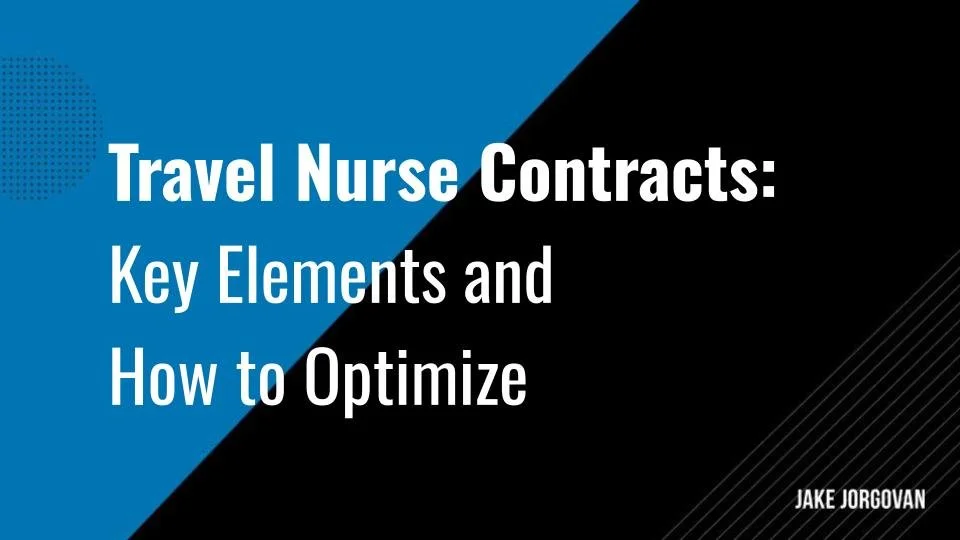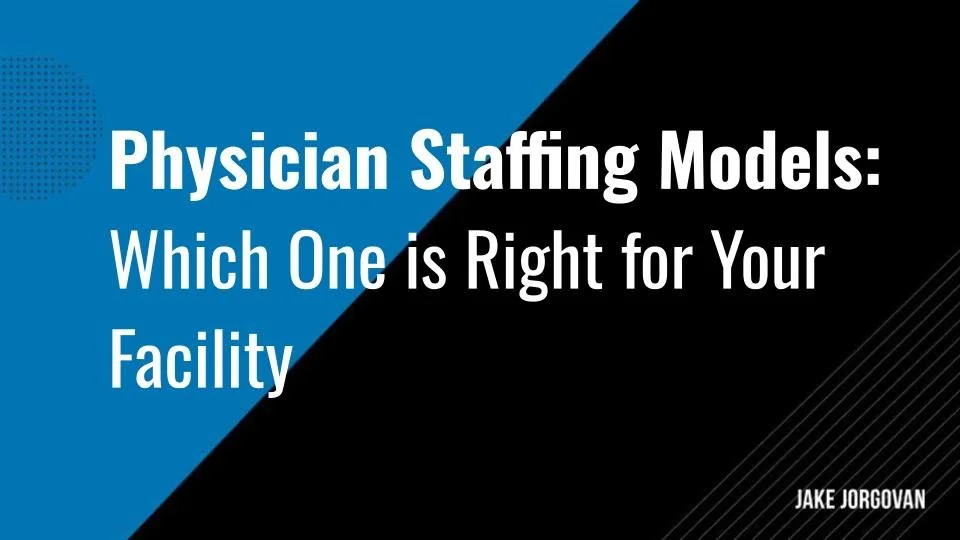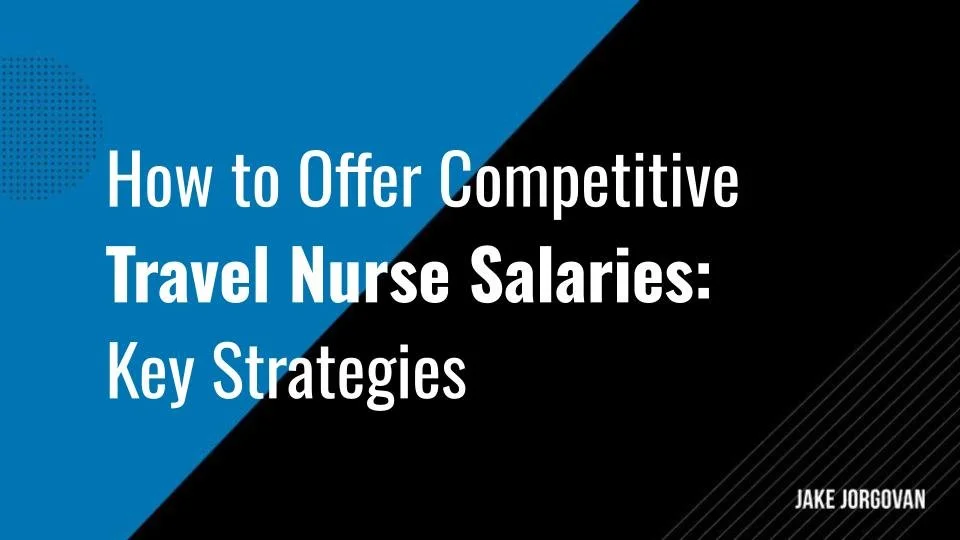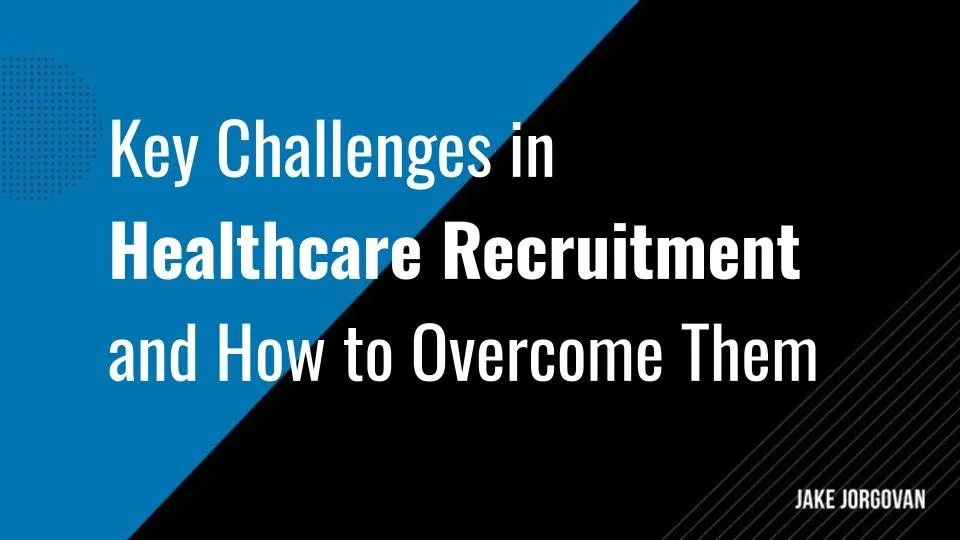Physician Staffing Models: Which One is Right for Your Facility
Selecting the right physician staffing model for your business is foundational to your healthcare facility’s operation and efficiency.
That’s how you ensure that patient care standards are not only met but exceeded.
However, healthcare staffing presents both obstacles and advantages. And you can’t handle it without a nuanced approach.
Luckily, you’re on the right page.
This article explores various staffing models:
In-House
Flexible Workforce
Top-of-License
Cross-Training
Each offers distinct benefits and faces specific challenges, suited to different facility needs and contexts.
Our discussion aims to guide healthcare administrators in making informed choices that align with their operational goals and patient care objectives.
Let’s begin.
1. In-House Staffing Model
In the in-house staffing model, you rely on full-time physicians. These professionals form a dedicated internal team. Their familiarity with protocols enhances patient care consistency.
This model fosters a robust organizational culture. Over time, your employees integrate better and better, aligning closely with your facility’s values and objectives. The result is that it strengthens team morale and promotes professional growth.
This setup also streamlines the workflow and decision-making processes. As a result, it simplifies administrative oversight.
Best Suited For: Facilities with stable patient volumes and long-term staffing needs.
Key Benefits:
You experience enhanced team cohesion.
A unified culture elevates patient satisfaction.
Familiarity improves your team's operational efficiency.
Consistency in staffing reduces training needs.
You save on recruitment and induction costs.
Dependence on temporary staff significantly decreases.
Long-term financial planning becomes more predictable.
You foster deeper trust among your staff.
This stability attracts top healthcare talent.
Challenges:
Initial investments in hiring impact your budget.
Onboarding involves significant time and financial resources.
You face higher ongoing expenses for benefits.
Full-time salaries typically exceed part-time costs.
Increased staff benefits necessitate larger financial allocations.
Rigorous training programs require substantial funding.
Covering absences often leads to overtime costs.
Staffing beyond regular hours increases payroll expenses.
Managing overtime can strain your operational budgets.
2. Locum Tenens Model
In the Locum Tenens Model, you hire temporary physicians. These professionals address immediate, short-term staffing needs.
This model enables you to manage unexpected patient surges. It also covers staff shortages during vacations or illnesses.
Therefore, you maintain operational continuity without permanent hires. This flexibility supports your facility during transitional periods.
Besides, this model ensures care quality without the commitment of long-term contracts.
Pro tip: You can also use this staffing model to evaluate potential full-time candidates practically. Thus, you can adapt quickly to changes in patient demand.
Best Suited For: Facilities in rural areas or those experiencing frequent staff shortages.
Key Benefits:
You adapt swiftly to increasing patient demands.
This model caters effectively during unforeseen peaks.
Temporary staff fill in without lengthy commitments.
You ensure continuous care during staff absences.
It mitigates the impact of seasonal fluctuations.
You avoid overworking your core team members.
Staffing flexibility helps maintain service quality consistently.
This approach provides coverage with minimal disruption.
It offers a buffer during recruitment periods.
Challenges:
Credentialing processes often slow down staff deployment.
Licensing requirements vary, complicating rapid onboarding.
You face delays integrating new temporary physicians.
Continuity of care challenges arise with transitions.
Temporary physicians may struggle with facility-specific protocols.
Patients might experience varying care levels.
Building trust with temporary staff takes time.
You might observe a dip in care consistency.
Frequent changes can affect patient satisfaction levels.
3. Flexible Workforce Model
In the Flexible Workforce Model, you use varied staffing types. It combines part-time, per diem, and on-demand professionals.
This approach aligns staffing with actual patient needs. You adjust staff levels quickly based on demand.
But it also reduces overhead by optimizing payroll expenses. This means you have coverage without overcommitting to full-time hires.
And you manage staffing dynamically, enhancing operational agility. This flexibility supports your facility's fluctuating needs effectively.
Arguably even better, this model taps into a wider talent pool. Therefore, you draw on diverse skills and experiences to improve your results.
Best Suited For: Urban hospitals with high variability in patient admissions.
Key Benefits:
You optimize spending while adjusting to demand.
This model avoids financial strain from overstaffing.
Your flexibility in scheduling cuts unnecessary costs.
You access a vast pool of talent.
This diversity enriches your facility's service quality.
Broad networks ensure availability during critical times.
You leverage specialized skills as patient needs dictate.
This approach avoids long-term financial commitments.
You benefit from fresh perspectives with each hire.
Challenges:
Coordinating schedules becomes intricate with varied staff.
You manage multiple shifts and availability patterns.
Diverse work schedules challenge standard operational processes.
Integrating part-time staff with full-timers presents hurdles.
Occasional tensions may arise from differing commitments.
Full-time employees might perceive inequality in workloads.
Communication gaps can emerge between different staff types.
You need robust systems to track diverse schedules.
Ensuring consistent patient care across shifts requires effort.
4. Top-of-License Model
In the Top-of-License Model, you ensure clinicians use their full training. This approach maximizes each professional's licensure potential.
You can also align tasks with specific skill sets effectively. This strategy optimizes healthcare delivery in your facility. And it promotes job satisfaction by valuing professional capabilities.
Another benefit is that you minimize underutilization of skills, enhancing operational efficiency.
Plus, this model fosters a culture of empowerment and respect. As such, it boosts morale and motivation among your staff. Ultimately, you achieve higher quality patient care consistently.
Best Suited For: Facilities looking to optimize existing staff roles and responsibilities.
Key Benefits:
Your efficiency soars by maximizing each clinician's potential.
Task alignment with skills reduces unnecessary labor costs.
You avoid spending on tasks beneath clinician qualifications.
Professionals feel valued, enhancing job satisfaction.
Utilizing full capabilities leads to higher retention rates.
Job fulfillment reduces turnover and associated rehiring costs.
Staff commitment grows within their optimized roles.
Higher satisfaction translates to improved patient care quality.
You foster a motivated and focused workforce.
Challenges:
Accurate assessment of skills demands intensive analysis.
You must deeply understand each clinician's qualifications.
Misjudgments in skill evaluation can reduce effectiveness.
Implementing this model requires detailed skill inventories.
Additional training may become necessary to fill gaps.
Training investments increase initial costs and time commitments.
Ongoing education is essential to maintain high standards.
Adapting roles to evolving practices might require updates.
You face challenges aligning existing staff with new expectations.
5. Cross-Training Model
In the Cross-Training Model, you prepare staff for multiple roles. This strategy enhances flexibility in managing your workforce.
When you equip your team to handle various responsibilities, you have coverage across different areas when needed.
This versatility is necessary in managing unforeseen absences. It also helps during sudden spikes in patient volume, when you enable a seamless workflow despite staffing fluctuations.
Best Suited For: Facilities with versatile staffing needs and a commitment to ongoing staff development.
Key Benefits:
Your staffing approach adapts quickly to demands.
Cross-training enables flexible redistribution of workforce resources.
You fill gaps without relying on external hires.
This model reduces vulnerability to unexpected staff shortages.
Team members can cover multiple roles efficiently.
It mitigates the impact of sudden absences.
Your facility remains operational under varied circumstances.
Cross-skilled staff enhance overall workflow continuity.
This resilience protects against disruptions in patient care.
Challenges:
Comprehensive training consumes significant time and resources.
Initial investments in training can be substantial.
You allocate budget for diverse skill development.
Training periods may divert attention from daily operations.
Productivity could drop while staff adjust to roles.
Learning multiple skills can temporarily overwhelm team members.
Quality of care might fluctuate during training phases.
Mistakes may occur as staff master new duties.
Balancing routine tasks with training demands careful planning.
Choosing the Right Model for Your Facility
To select the ideal physician staffing model for your facility, follow these steps:
Start by analyzing your facility's specific needs. Assess both current and projected patient demographics.
Evaluate the typical volume of patients. Identify patterns, including peak times and slower periods. For example, both an in-house and cross-training staffing model can be great if you have a constant influx of patients.
Consider your financial constraints. Review your budget for staffing, including potential for investment in training. Locum tenens, flexible, and cross-training models are great for a limited budget.
Match patient volume variability with staffing models. Choose models that offer flexibility for fluctuating demands if that’s what you need.
Assess the skills and specialties of your current staff. Determine if there is underutilization or skill gaps.
Prioritize models that align with your long-term strategic goals. Ensure they support not just current but future needs.
Consider the integration of technology in staffing management. Evaluate how different models can leverage these tools.
Finally, consult with stakeholders. Include feedback from management and frontline staff to understand practical implications.
When selecting a staffing model, consider internal factors. Assess your team's skills and their alignment with needs.
External factors, such as the local healthcare market, also influence your decision. This market analysis includes competitor staffing strategies and community health trends.
Understanding both sets of factors ensures you choose a model that is not only internally coherent but also externally competitive. This holistic view facilitates a staffing strategy that adapts to both current conditions and future changes. Your choice should enhance service quality while remaining responsive to the evolving healthcare environment.
Insider tip:
Consider piloting multiple staffing models simultaneously in different departments or for select services. This trial approach allows you to gauge real-world effectiveness and staff receptivity before committing to a full-scale implementation. Use the results to fine-tune your strategy, ensuring it fits your facility's unique context.
Implementation Strategies
To successfully implement a new staffing model in your healthcare facility, follow these strategic steps designed to ensure smooth adoption and operational efficiency:
Begin by securing buy-in from leadership. Present data-driven projections to illustrate potential benefits.
Educate leaders on the strategic impacts of different staffing models. Highlight compatibility with facility goals.
Invest in comprehensive staff training. Tailor programs to specific needs of the chosen model.
Ensure training includes practical applications and theoretical knowledge. This approach solidifies understanding and engagement.
Utilize technology for efficient scheduling and management. Adopt systems that support flexibility and real-time adjustments.
Implement a pilot program. Start small to test processes and refine them based on feedback.
Communicate openly with all staff about changes. Use regular updates to maintain transparency and address concerns.
Monitor implementation closely. Track performance against predefined metrics to evaluate success and identify areas for improvement.
Insider tip:
Align each department's key performance indicators (KPIs) with your chosen staffing model. This alignment ensures that departmental goals support the broader objectives of the staffing strategy, making it easier to measure success and drive engagement from your team throughout the implementation phase.
Optimizing Physician Staffing: Key Models and Strategic Considerations for Your Healthcare Facility
Choosing the right physician staffing model is key. Each model we presented offers distinct advantages and challenges.
That’s why evaluating your facility's specific needs and patient demographics is crucial. And, of course, piloting models helps you find the best fit.
Let’s summarize:
In-house staffing builds team cohesion but can be costly.
Locum tenens provide flexibility but may disrupt care continuity.
A flexible workforce adapts to demand but complicates scheduling.
The top-of-license model maximizes skills but requires detailed understanding.
Cross-training enhances flexibility but demands significant training investment.
Choose wisely, but remember to continuously refine your approach for optimal results.
Continue reading:



































